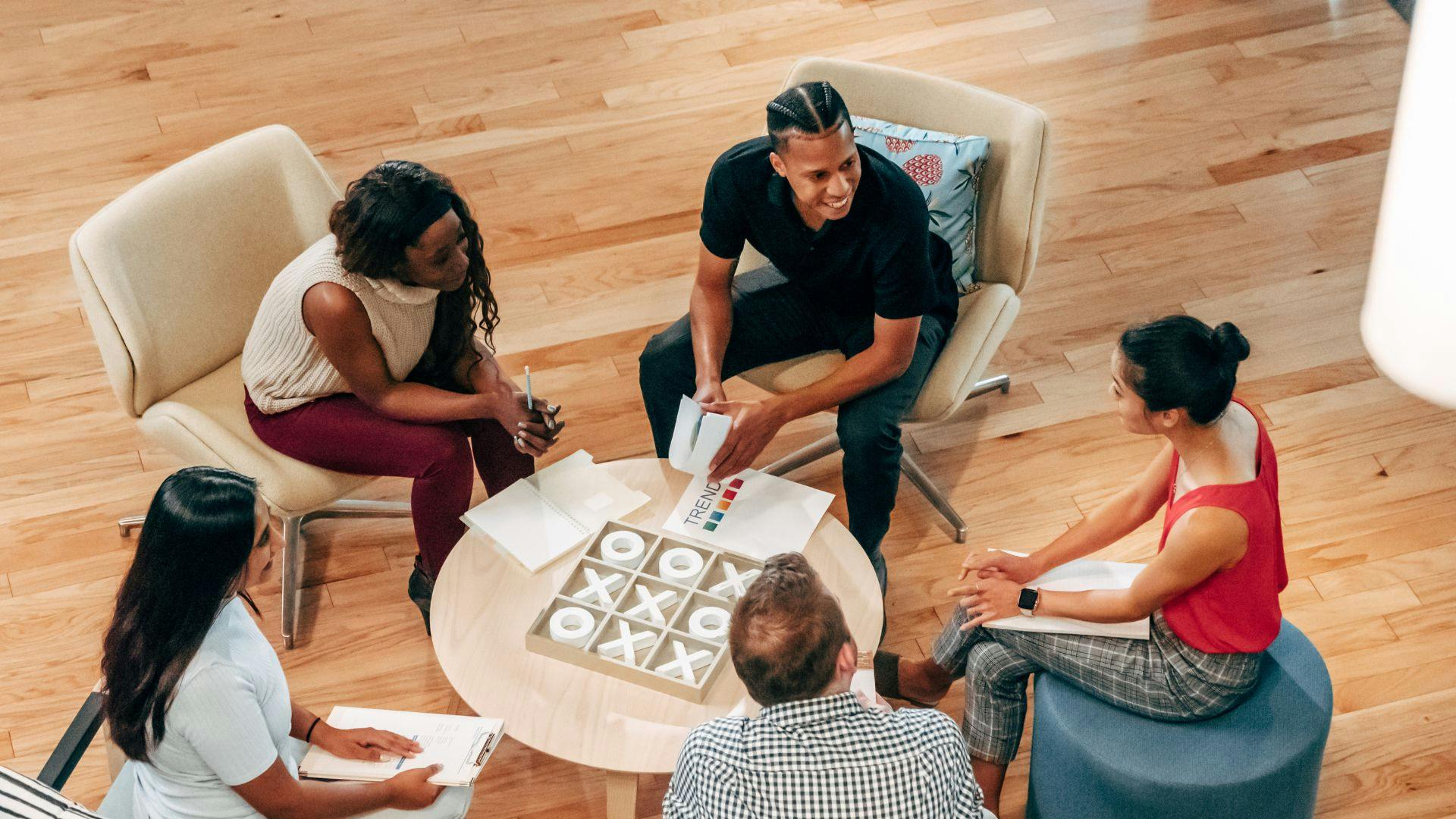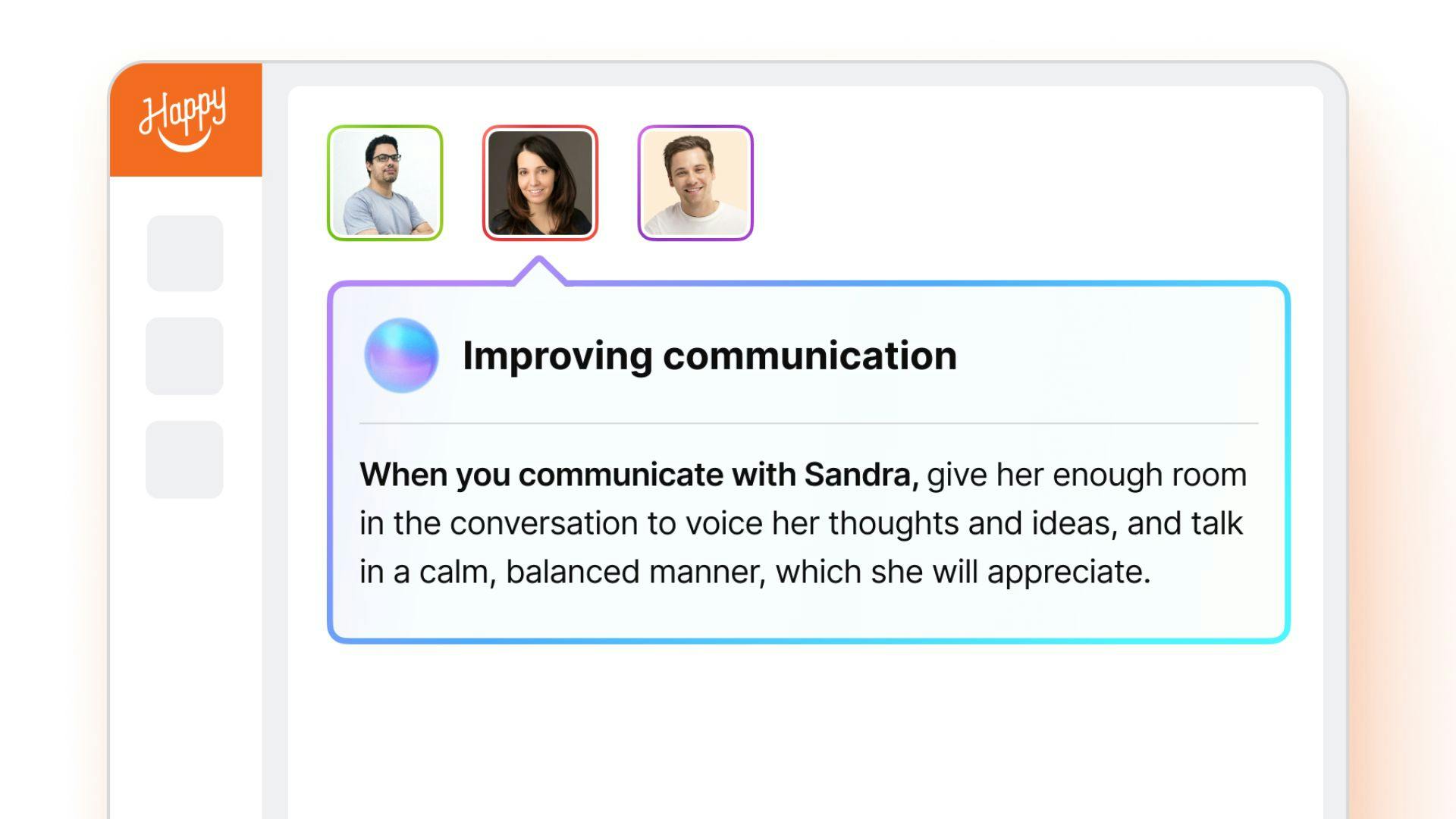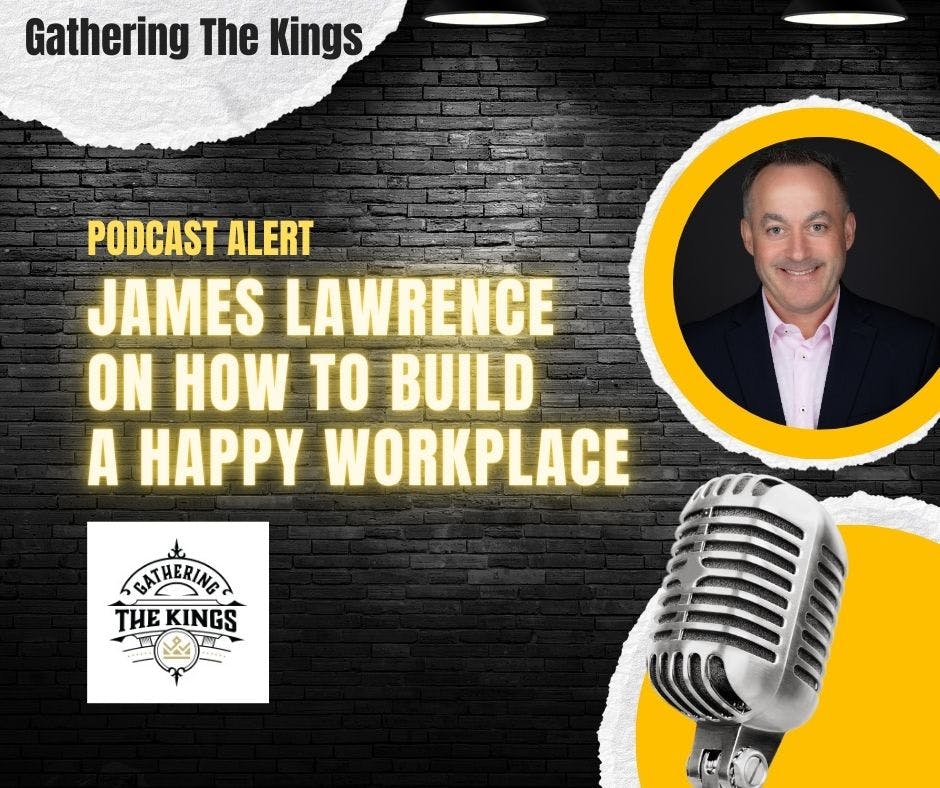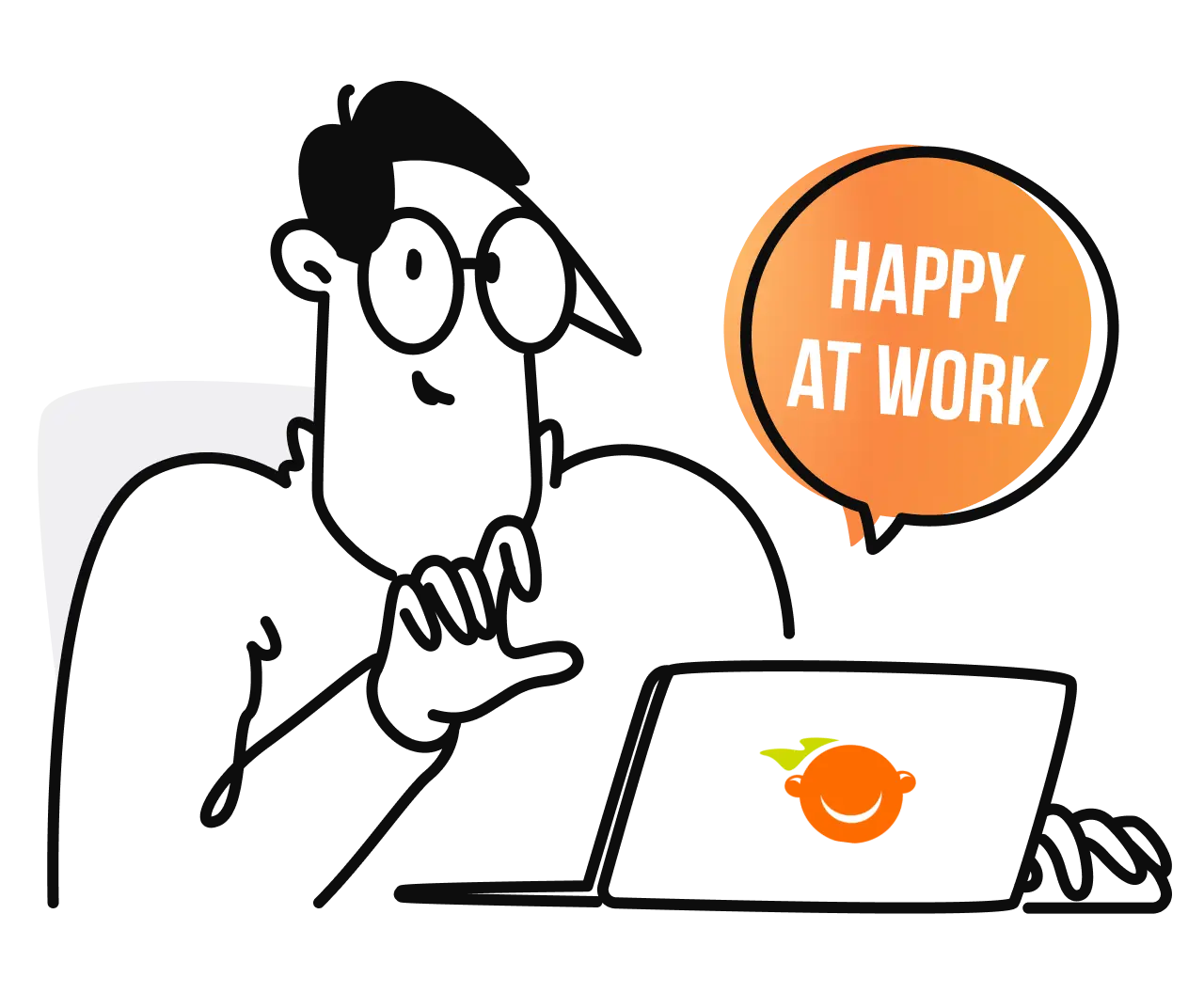We all wish for a workplace where everyone gets along seamlessly, but even in the most effective and harmonious offices, conflict is bound to arise. It pops up because people think differently, aim for different things, or just have their own ways of getting things done. Usually, we think of these moments as problems. But what if we saw them as opportunities instead? Imagine using these conflicts to spark new ideas, build stronger teams, and drive our businesses forward. This article will show you how to look at workplace disagreements differently and how Happy can help turn these challenges into big wins for everyone involved.
Conflict: A Hidden Opportunity
At first glance, conflict might seem like an unwelcome distraction. Yet, it holds the potential to foster a deeper understanding among team members, spur creative solutions, and strengthen team cohesion. The key lies in managing conflict constructively. Turning workplace conflict into opportunity isn't just a theoretical concept; it's backed by research indicating that when managed well, conflict can foster innovation, team cohesion, and improved performance.

Here are some ways to reframe conflict, thinking about how when approached with the right mindset, it can actually bring about better outcomes:
Enhances Problem-Solving
When people see things differently, it's actually a good thing for solving problems. Imagine you're trying to figure out the best way to organize a project. If everyone thought the same way, you'd only have one idea. But with different viewpoints, you get lots of ideas, which means you can come up with something really creative and effective that you might not have thought of before.
Improves Relationships
It might feel uncomfortable at first, but having open, honest talks about what's bothering you can make your work relationships better. When you talk things out, you show you respect the other person enough to hear their side and share your own. This doesn't just clear the air; it makes your bond stronger because you understand each other better.
Promotes Personal Growth
Dealing with disagreements can make you smarter about your feelings and better at handling them. Individuals who learn to cope with conflict effectively are more adaptable, emotionally intelligent, and have better leadership skills. It's like getting to know yourself better. You learn what triggers your reactions and how to stay calm and clear-headed, even when things get heated. This doesn't just help at work; it's a skill that makes life smoother outside of work, too.
Making Conflict Work for You
Turning conflict into opportunity isn't merely an aspirational aim for businesses; it's a tangible strategy that individuals within any team can adopt to foster personal and collective growth. Whether you're navigating the complexities of team projects, striving for innovation, or simply seeking to improve day-to-day interactions, understanding how to transform disagreements into constructive outcomes is a valuable skill. This approach isn't confined to organizational strategies; it's deeply personal and begins with each team member's willingness to engage differently with conflict.
Here's how you, as an individual, can start applying these strategies to turn every challenge into a chance for development and success:
Embrace Diverse Perspectives
Leverage disagreements as a springboard for creativity. When a disagreement pops up, try seeing it as a door to new ideas rather than a roadblock.
When faced with a conflict, challenge your team to use the tension as a catalyst for brainstorming innovative solutions. This approach turns conflict from a problem to be solved into a creative challenge that can excite and engage the team. By encouraging members to view conflicts as puzzles that require creative teamwork to solve, you foster an environment where conflict becomes a driving force for innovation and progress.
Encourage everyone on your team to share their thoughts and listen to what others have to say. Creating a culture built around this kind of psychological safety can be instrumental to navigating conflict productively. This is where Happy can really shine. It gives you a peek into how each person on your team thinks and works, which can help you all appreciate where each other is coming from. When you start seeing your team's different viewpoints as valuable, you open up a whole world of innovative solutions you might never have considered otherwise.

Focus on the Issue, Not the Person
It's easy to slip into blaming someone when things go wrong. But making it personal only makes things worse. The key is to ensure the conflict stays focused on tasks, not personal differences.
Instead, try to help your team learn to zero in on the actual problem at hand and even better - what are actionable ways to look for resolutions. This way, you're all working together to find a solution, rather than getting stuck on who did what. When you focus on fixing the issue rather than pointing fingers, you'll not only solve the problem faster but also keep your team's relationships strong.
Foster Open Communication
To make your team a place where everyone feels okay about speaking up, you've got to build a culture of trust. This means making sure everyone knows it's safe to share their ideas and feelings without worrying about negative backlash. When your team knows how to communicate in a way that respects everyone's feelings, you'll find that resolving conflicts becomes much smoother.
There are many ways that you can actively contribute to building this culture:
- Actively Listen and Validate Others: Show genuine interest in your colleagues' viewpoints. Listening actively and validating their experiences and feelings, even if you disagree, can significantly enhance trust. It communicates respect for their perspective and fosters a safer space for dialogue.
- Encourage Equitable Participation: Make an effort to ensure that all voices are heard. In meetings, encourage quieter team members to share their thoughts and ensure that more dominant voices don't overshadow others. This balance allows for a richer tapestry of ideas and perspectives, enriching the team’s collaborative efforts.
- Model Transparency: Be open about your own thoughts and feelings, especially as they relate to projects and tasks. By sharing your own experiences and challenges openly, you set a precedent for honesty and transparency within the team.
- Address Conflicts Directly and Constructively: When disagreements arise, approach them directly but with empathy. Use “I” statements to express your feelings without assigning blame. For example, "I feel overwhelmed when deadlines are changed at short notice," instead of, "You always change deadlines at the last minute." This approach helps to focus on resolving the issue rather than escalating the conflict.
- Provide Positive Feedback: Regularly acknowledge and appreciate the contributions of your team members. Positive reinforcement not only boosts morale but also reinforces the value of open communication. It shows that sharing ideas and efforts are recognized and appreciated, encouraging more active participation.
- Create Opportunities for Informal Interactions: Foster an environment where team members can interact outside the strictures of work-related tasks. Informal interactions can strengthen relationships and understanding among team members, making it easier to navigate conflicts when they arise.
Seek Common Ground
Even when it seems like you're at odds, there's usually something you can agree on. Finding that common ground can turn a conflict from a battle into a team effort. Look for shared goals or values that everyone cares about, and use those as a starting point to work through your differences.

Here’s how to effectively search for and utilize common ground in conflict situations:
- Identify Shared Objectives: Begin by identifying the goals or outcomes that both parties agree are important. These could be long-term project goals, the team's overall success, or even shared values like respect and innovation. Recognizing these shared objectives can help reframe the conflict from an adversarial standoff to a collaborative problem-solving session.
- Tap Into Your Emotional Intelligence: Express your understanding of the shared goals or values in a way that shows empathy towards the other person’s viewpoint. Phrases like "I see we both want the best outcome for this project" can reaffirm the shared intentions and reduce defensive responses.
- Brainstorm Together: Once you’ve established common ground, work together to brainstorm solutions that address both parties' concerns. This collaborative approach not only fosters creative solutions but also strengthens team dynamics by emphasizing cooperation over conflict.
- Develop a Plan Based on Mutual Benefits: Create a resolution plan that highlights the mutual benefits, focusing on how the agreement helps achieve the shared objectives identified earlier. This plan should outline specific steps to be taken, ensuring that both parties are clear on how the resolution supports the common goals.
- Reflect and Learn: After resolving the conflict, take some time to reflect on the process. Discuss what worked in finding common ground and how this approach can be applied to future disagreements. This reflection helps solidify the strategy as a go-to method for conflict resolution within the team.
Seeking common ground is not about compromising values or conceding defeat; it’s about finding a pathway that respects and incorporates the perspectives and needs of all involved. By prioritizing shared objectives and values, conflicts can become opportunities for strengthening relationships, enhancing communication, and fostering an environment of collaboration and mutual respect. This approach not only resolves the immediate disagreement but also contributes to a more cohesive and productive team dynamic.
Navigating Conflict with Happy
Incorporating tools that enhance team understanding and communication, like Happy, can play a crucial role. Happy combines the power of behavioral science and AI to provide valuable insights into how teams can work better together and effectively address challenges as they come up. It understands that everyone has their own way of working and aims to make it easier to navigate these differences, tapping into the unique strengths of each team member.

With features like Happy Workstyles and Happy Coach, the platform goes beyond simply reducing conflict. It sets the stage for teams to become more innovative, unified, and resilient.
- Understanding Individual Work Styles: Happy quickly creates a personalized guide for each team member, showing how varied work styles can enhance, rather than interfere with, team harmony.
- Facilitating Effective Communication: Happy strengthens organizational culture and ensures communication is constructive, focusing on the issue at hand rather than personal differences.
- Empowering Managers: Happy offers tools that seamlessly integrate into daily management practices, enabling managers to become skilled facilitators of positive outcomes from conflicts.
By leveraging Happy, teams not only navigate conflicts with greater ease but also unlock the potential for growth and innovation, turning everyday challenges into opportunities for success.
Turning Challenges into Wins
Conflict, when managed effectively, is not a barrier to success but a bridge to it. While we often try to keep things peaceful and steer clear of arguments, it's important to see how handling disagreements well can really change things for the better.

The ability to turn conflict into a stepping stone rather than a stumbling block is a skill that benefits us at every level. When teams learn to navigate disagreements constructively, they unlock a wealth of opportunities for development, creativity, and deeper understanding. It's about leveraging diverse perspectives to foster innovation, using honest dialogue to strengthen bonds, and embracing challenges to propel forward movement.
The journey towards harnessing conflict's positive potential requires more than just the right tools; it demands a shift in mindset. A culture that views conflict as an opportunity rather than a problem encourages open communication, mutual respect, and a commitment to collective goals. It's about creating spaces where conflicts are approached with curiosity and openness, where challenges are met with collaboration and creativity, and where every obstacle is viewed as an opportunity to learn, grow, and excel together.
Keep Reading

- Announcements
- 5 mins to read
Enhance Team Potential with Happy's New Coaching Circles
Discover how Happy's Coaching Circle can help build better communication and teamwork for more effective collaboration.

- Employee Engagement
- 9 mins to read
Unlocking Business Success with People Centered Leadership
Explore how embracing a people-centric approach in leadership can propel business innovation and profitability.

- Podcast
- 12 mins to read
The Blueprint for Workplace Happiness: James Lawrence on Gathering the Kings Podcast
Unlock the secrets to a thriving workplace with Happy's CEO's top insights on leadership, culture, and team dynamics.


